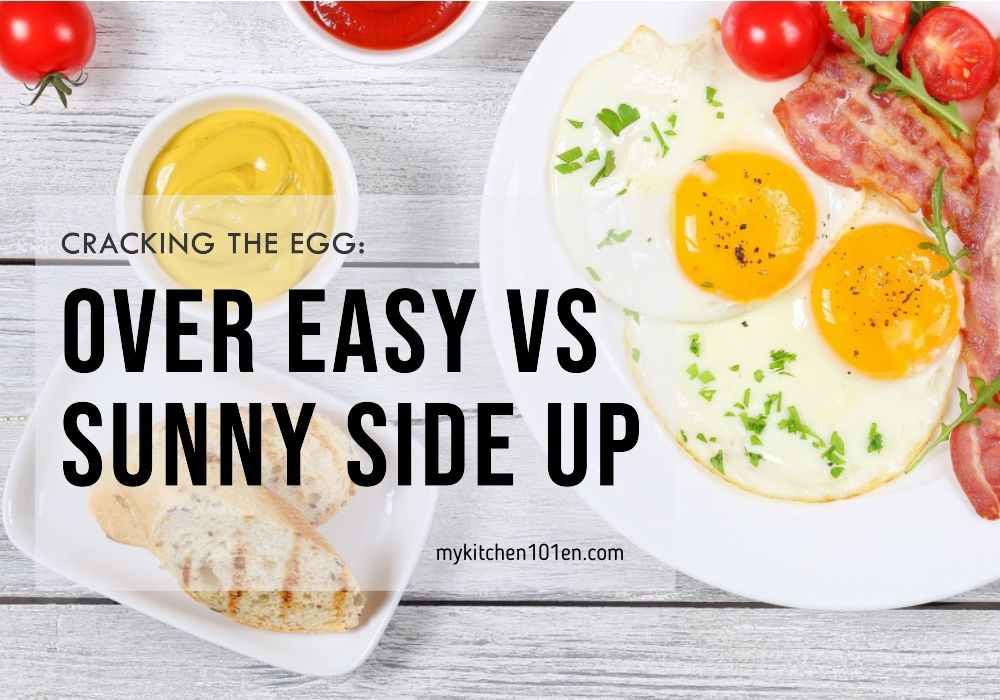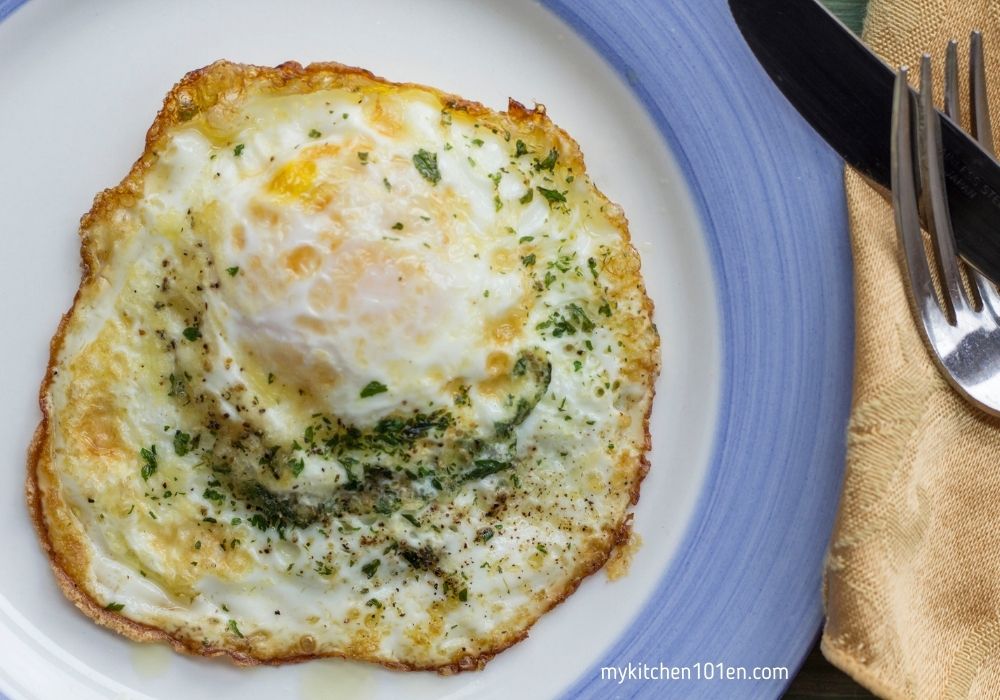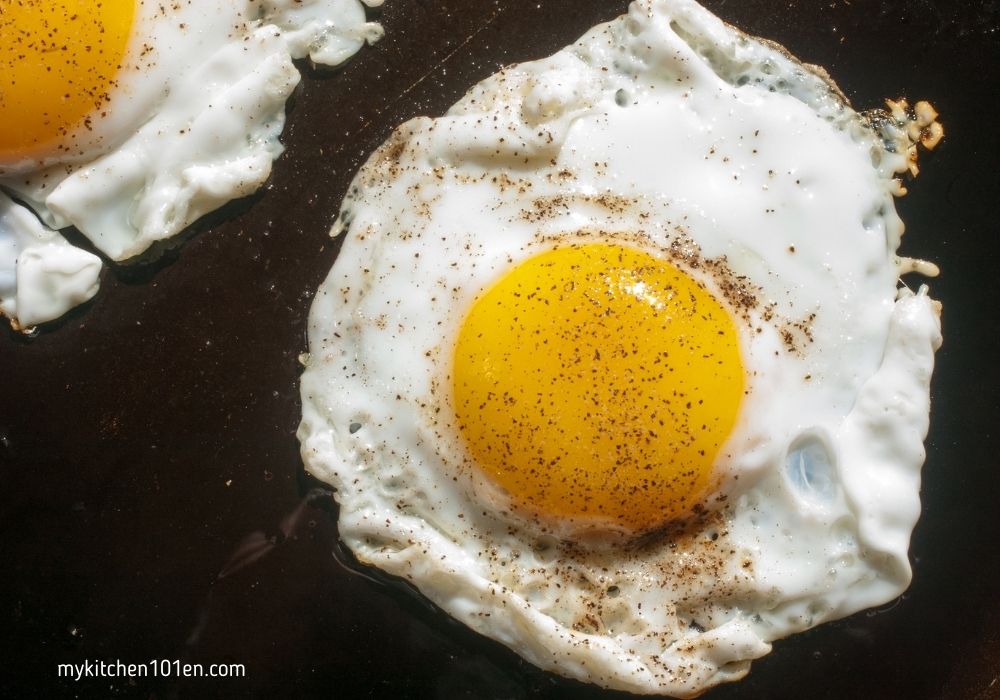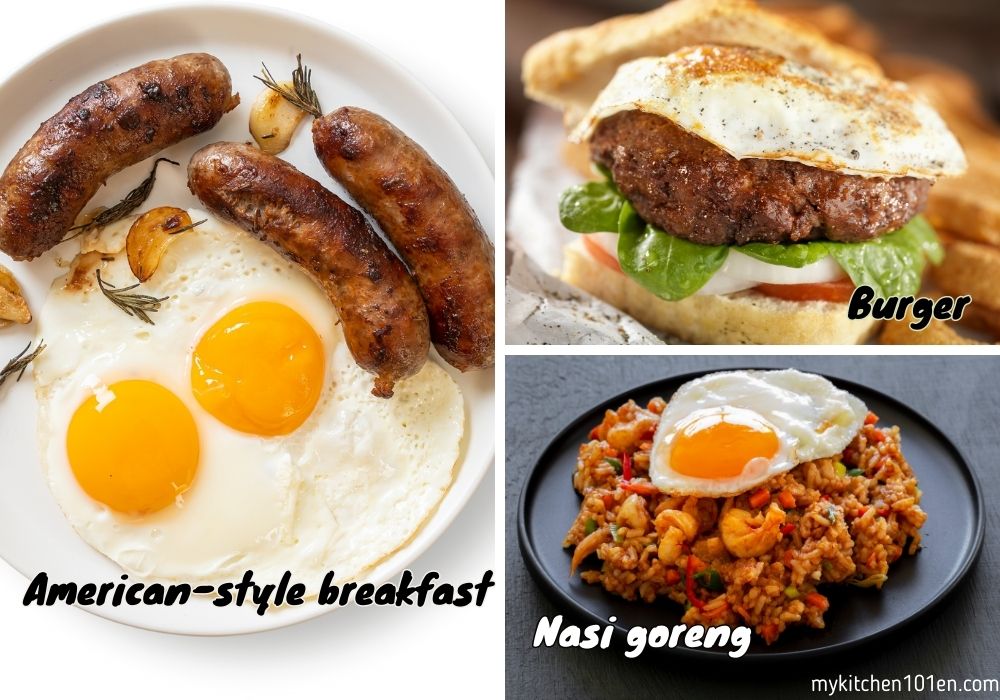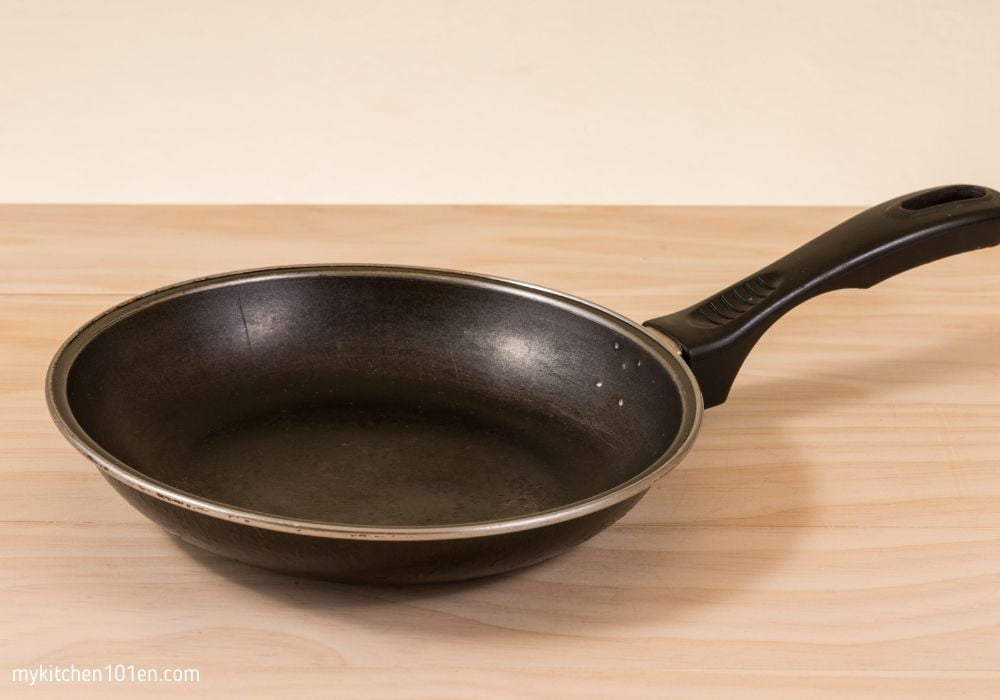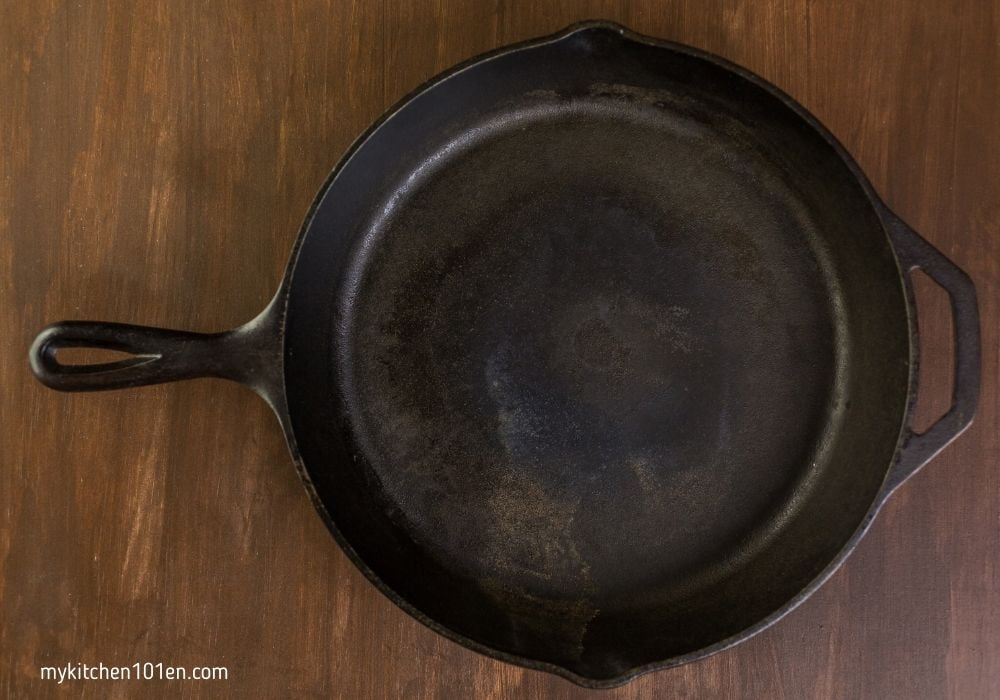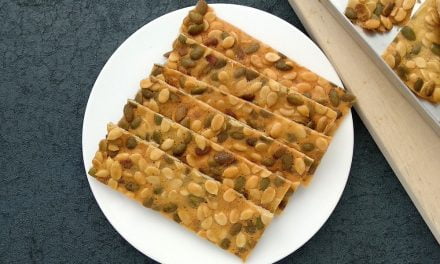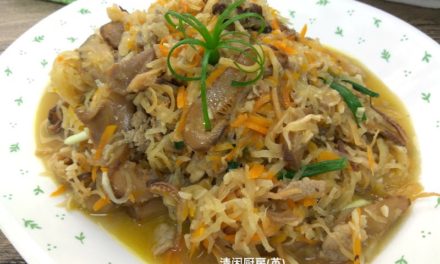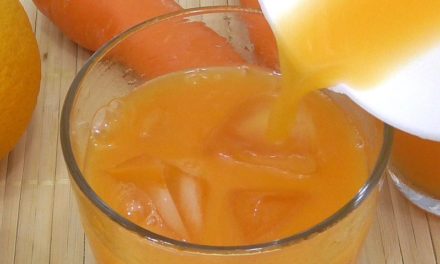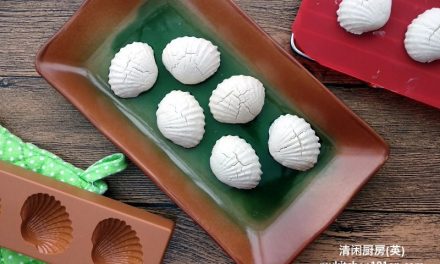Two Classic Styles of Eggs: Over Easy and Sunny Side Up
People have many different styles of cooking eggs, but two that are especially popular are the sunny side-up egg and its cousin, the over-easy egg.
These two styles are often confused with each other, but they’re actually quite distinct in their preparation and taste.
Over easy eggs are fried eggs that are flipped over once during cooking. The yolk remains runny while the whites cook through, resulting in a delicious contrast between crispy edges and a gooey center.
On the other hand, sunny side up eggs are fried without being flipped over – they cook on one side only until the whites are set but the yolk remains unbroken – creating a visually stunning dish with a rich flavor.
Knowing how to prepare both types of eggs is important for anyone who wants to master basic egg cookery. Each style has its own unique characteristics that can add depth and flavor to dishes like salads, sandwiches, or breakfast plates.
Table of Contents
The Importance of Knowing How To Cook Each Style
Being able to cook both over easy and sunny side up eggs is essential for any home chef who takes their breakfast routine seriously. The difference between a perfectly cooked egg and an undercooked or overcooked egg can make all the difference in your dish’s taste.
It’s important not just for taste purposes but also for nutritional reasons since undercooked whites can harbor bacteria. Moreover, understanding how to make each style gives you more options when it comes time to prepare meals that include fried or poached eggs as an ingredient.
Aside from this, if you’re someone who enjoys trying out new recipes or creating your own dishes then learning how to make these two classic styles will allow you greater creativity in coming up with new breakfast creations that showcase your culinary skills.
Overall, understanding how to cook both over easy and sunny-side-up-style eggs is an essential skill to have in your kitchen toolkit. Whether you’re a beginner cook or a seasoned pro, mastering these egg styles will take your breakfast game to the next level.
Over Easy Eggs
Definition of Over Easy Eggs
If you’ve ever ordered eggs at a restaurant, you might have come across the term “over easy.” It’s a popular way to cook eggs, especially for breakfast dishes. But what does it really mean?
It’s similar to a sunny side up egg, but with an added step of flipping the egg over.
An over easy egg is an egg that has been fried on both sides, with the yolk still runny and the whites cooked through.
How to Cook Over Easy Eggs
- To cook an over easy egg, start by heating up your non-stick pan on medium heat.
- Once the pan is hot enough (you can test this by flicking water onto it – if it sizzles and evaporates immediately, it’s ready), crack your egg into the pan.
- Let it cook for about 30 seconds to a minute until the whites start to set.
- Then, use a spatula to carefully flip the egg over and let it cook for another 20-30 seconds.
Pros and Cons of Cooking Over Easy Eggs
The result is a perfect combination of crispy edges and gooey yolk that pairs well with toast or English muffins.
However, there are some drawbacks when cooking eggs over easy.
- If you’re not careful when flipping the egg or if your pan isn’t non-stick enough, you risk breaking the yolk or having a messy clean-up job later on.
- Additionally, some people might not enjoy runny yolks and prefer their eggs fully cooked through instead.
Overall though, mastering how to make over easy eggs allows for more flexibility in breakfast dishes as well as adds variety in texture and taste compared to just plain scrambled eggs or hard-boiled eggs.
Sunny Side Up Eggs
Definition of Sunny Side Up Eggs
Sunny side up eggs are a breakfast classic that are loved by many.
This style of egg is cooked with the yolk facing up and the whites still runny.
The name “sunny side up” comes from the way the egg looks once it’s cooked – the yolk resembles a bright yellow sun with rays extending outwards.
How to Cook Sunny Side Up Eggs
- To cook sunny side up eggs, start by heating a non-stick frying pan over medium heat.
- Crack one or two eggs into the pan, being careful not to break the yolks.
- Once the whites begin to set, reduce heat to low and cover the pan with a lid or aluminium foil. This will help cook the whites without overcooking or burning them.
- Cook until the egg whites are set but still jiggly and translucent around the yolk.
- When you’re ready to serve your sunny side up eggs, use a spatula to gently slide them onto your plate. If you want to keep them warm while you make more, keep them in an oven at its lowest setting until ready to serve.
Pros and Cons of Cooking Sunny Side Up Eggs
Sunny side up eggs make a great accompaniment to other breakfast items, as their gooey yolks can be spread onto toast or used as sauces.
Additionally, due to their simple preparation method, they’re quick and easy to make on busy mornings.
However, there are also some cons when cooking sunny side up eggs.
- The biggest one is that if not cooked properly, there’s potential for uncooked whites which can lead to foodborne illness if consumed raw or undercooked.
- Additionally, some people may not enjoy runny yolks and prefer their eggs fully cooked through.
Differences Between Over Easy and Sunny Side Up Eggs
| Over Easy Eggs | Sunny Side Up Eggs | |
|---|---|---|
| Cooking Method | Egg is cracked into a pan and cooked until the whites solidify. It is then flipped to cook briefly on the other side. | Egg is cracked into a pan and cooked until the whites solidify. It is never flipped. |
| Appearance | Whites on both sides are fully cooked with a thin layer of white over the yolk. The yolk remains mostly runny. Edges can be slightly crispy. | Whites are fully cooked and the yolk is visible, runny, and resembles a morning sun. |
| Texture | Whites are firm and the yolk is mostly runny. The flipping can give a slight crispness to the edges. | Whites are fully cooked and firm, while the yolk is runny and warm. |
| Taste | Taste slightly varies due to the brief cooking on both sides. | Rich yolk flavor dominates due to the yolk not being cooked on top. |
| Best For | Those who prefer a slight cook on both sides of their egg with a runny yolk. | Those who enjoy dipping their toast into a runny yolk and prefer contrasting textures. |
Related:
- How to Cook Hard-Boiled Eggs Perfectly
- How to Make Chinese Tea Eggs
- How to Make Salted Egg: at Home in Just 10 Days, Easy Recipe
Popular Dishes That Use Each Style
Over easy eggs are commonly found as an ingredient in many American-style breakfasts such as steak and eggs or huevos rancheros. They can also be used as toppings for burgers, sandwiches, salads, pizza slices among others due to their good pairing potential.
On the other hand, sunny side up eggs have become common ingredients in various international breakfast dishes like French toast and egg benedict. They are also popular with traditional Asian dishes such as bibimbap or nasi goreng.
The differences between over easy and sunny side up eggs come down to the cooking technique, taste, texture, and popular dishes that use each style. Knowing how to cook each style will give you the freedom of incorporating it into your favorite recipes anytime you wish.
Tips for Perfecting Your Egg Cooking Skills
Choosing the Right Pan:
A well-made pan can help you ensure that your eggs come out just right. A non-stick pan is a great option because it prevents eggs from sticking to the surface, but any pan with a flat bottom and a low rim will work.
If you are looking for a recommendation, I suggest using a cast iron skillet because it cooks eggs evenly and can handle high heat. Plus, cast iron skillets are versatile and can be used for other dishes as well.
Using the Correct Heat Level:
Another key to getting perfectly cooked over easy or sunny side up eggs is using the right heat level. It’s important to find the sweet spot where your eggs cook quickly without burning.
For over easy eggs, start with medium heat and adjust as needed depending on your stove’s power.
For sunny side up eggs, use low heat so that they cook slowly but evenly without browning or burning.
Pay attention to how your eggs look as they cook and make adjustments as needed until they reach your desired texture.
Conclusion
Whether you prefer over easy or sunny side up eggs ultimately comes down to personal preference. Although they may seem similar, the differences in taste and texture can make a big impact on your breakfast experience.
If you prefer your eggs with a runny yolk and crispy edges, then over easy is the way to go. Just remember to cook them at a lower temperature and be careful when flipping them so that the yolk doesn’t break.
On the other hand, if you love gooey yolks and uncooked whites, then sunny side up is the perfect choice for you. Covering them while cooking will ensure that the whites cook through without overcooking the yolk.
Remember that mastering egg cooking skills takes practice and patience. So next time you’re making breakfast, try out both styles of eggs and see which one satisfies your taste buds!
FAQs
How can I ensure my yolk stays runny when making Over Easy eggs?
The key to a runny yolk in Over Easy eggs is careful heat management and timing. Once you flip the egg, let it cook for only about 20-30 seconds more. This should cook the whites just enough without overcooking the yolk.
Why are my Sunny Side Up eggs always runny on top?
Sunny Side Up eggs can sometimes appear runny on top due to the egg whites not fully cooking. Try covering your pan with a lid after you’ve cracked the egg into it. The steam generated will help cook the top of the egg without the need to flip it.
Can I make these eggs with a non-stick pan?
Yes, a non-stick pan is perfect for making both Over Easy and Sunny Side Up eggs. It makes flipping and removing the eggs easier without damaging the yolk.
Is there a health difference between Over Easy and Sunny Side Up eggs?
Generally, there isn’t a significant health difference between the two. Both cooking methods retain the nutrients of the egg. However, ensure that the egg whites are thoroughly cooked in either method to avoid the risk of salmonella.
How do I flip an Over Easy egg without breaking the yolk?
Use a wide spatula and make sure the egg is fully loose from the pan before you try to flip it. Be confident, and make a gentle but firm and quick flip.

